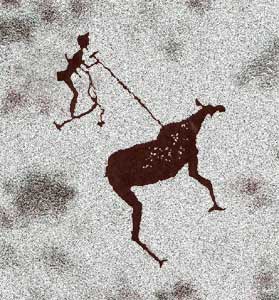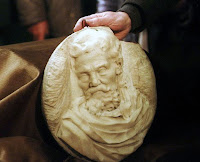So the presidential election season is in full swing already, with the allegedly big-time straw poll taking place in Davidson County, Iowa. The big winner this time, more than a full year before the 2012 presidential election, was Michele Bachmann, the darling of the very right part of the generally right-wing party of the Republican persuasion.

This is big news. See, the straw poll was the main event at the annual picnic of the Davidson County Republican Party. (Presumably, they don't have this sort of straw poll every year, even though the picnic is an annual one.) This year, however, most of the media in the known world would have been there, holding their breath until the tallies were released. And the big news that preceded the giant relief of those waiting to exhale was that Bachmann came out on top.
It was a rather crowded field, so she didn't exactly get a majority. In fact, her first-place finish was by way of a 20 percent preference. This was big news, of course, because she finished ahead of GOP mainstay Mitt Romney, who finished second in the polling, just ahead of Herman Cain, who used to run a pizza chain.
About 250 people attended this earth-shaking event; and if you do the math on that, you come up with about 50 people casting their straw for the congresswoman from Minnesota. Yep, Bachmann is a member of the House of Representatives. She's running for president, of course, and it brings to mind the chances of her taking the nomination and/or, conceivably, the presidency.
History is not a friend to her in this case, since the last person to go directly from the House to the White House was James A. Garfield, way back in 1880. Garfield was a Republican, so there is some precedent there. He won by a mere 10,000 popular votes, over the Democratic nominee, General Winfield Scott Hancock, who was as old as the hills 20 years before, during the Civil War. And Garfield, of course, was killed in his first year in office. But I digress.

Anyway, this straw poll business got me to thinking about whether we could use this method of solution-finding or decision-making for other important decisions. Imagine if the federal budget could be decided by a straw poll. We wouldn't need Reconciliation or Conference Committees or any other such pillars of modern democratic governing practice. As long as every voting member of both houses of Congress had a straw and submitted that straw for a final count, we could get on with the more important things in modern life, such as how many Twitter followers Lady Gaga is up to in the past week.
This straw poll idea might need some careful thinking when the Congressional bills got to the President for approval. Presumably, the President would have more than one straw, since he has Authorization or Veto power — although giving the President more than one straw sort of goes against the principle of one person, one vote. And you'd probably have to give the Supremes — sorry, the Justices of the Supreme Court — straws as well.
It could get kind of complicated, though. The key, I think, would be that each politically important person would get just one straw for each vote. So we might need to do some work around the idea of what Congress would do if the President cast the Veto straw at a Congressional bill. And conceivably, there's the Supreme Court's Unconstitutional straw to worry about as well. It's enough to make a Congressperson hold back on the straw-casting to see what everybody else is doing — or run for President.
 The recognition of a New Year, however, despite Dick Clark's longevity to the contrary, is not at all a new thing. Ancient people recognized a new year. The Babylonians, who knew a thing or two about astronomy, marked the first New Moon after the Vernal Equinox. This was not long into spring, which was a time of renewal of crops and planting and all manner of other survival-minded things.
The recognition of a New Year, however, despite Dick Clark's longevity to the contrary, is not at all a new thing. Ancient people recognized a new year. The Babylonians, who knew a thing or two about astronomy, marked the first New Moon after the Vernal Equinox. This was not long into spring, which was a time of renewal of crops and planting and all manner of other survival-minded things.  Leave it to Julius Caesar to fix things. (He fixed a lot of other things as well, among them the whole of Roman law and the border with Gaul &151; after he got through with the Gauls, they didn't need a border anymore.)
Leave it to Julius Caesar to fix things. (He fixed a lot of other things as well, among them the whole of Roman law and the border with Gaul &151; after he got through with the Gauls, they didn't need a border anymore.)



































